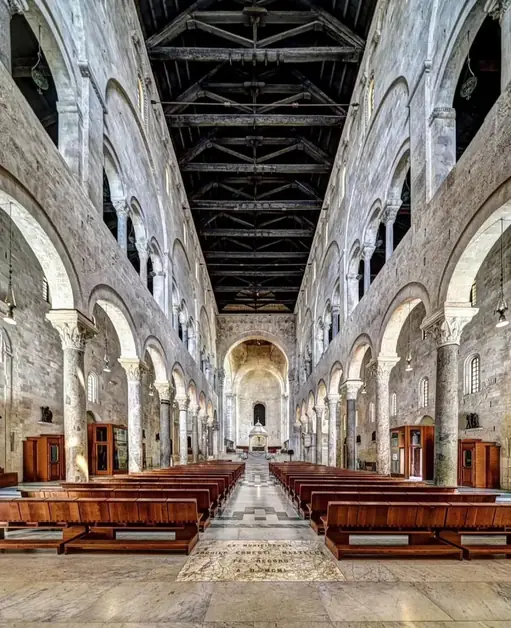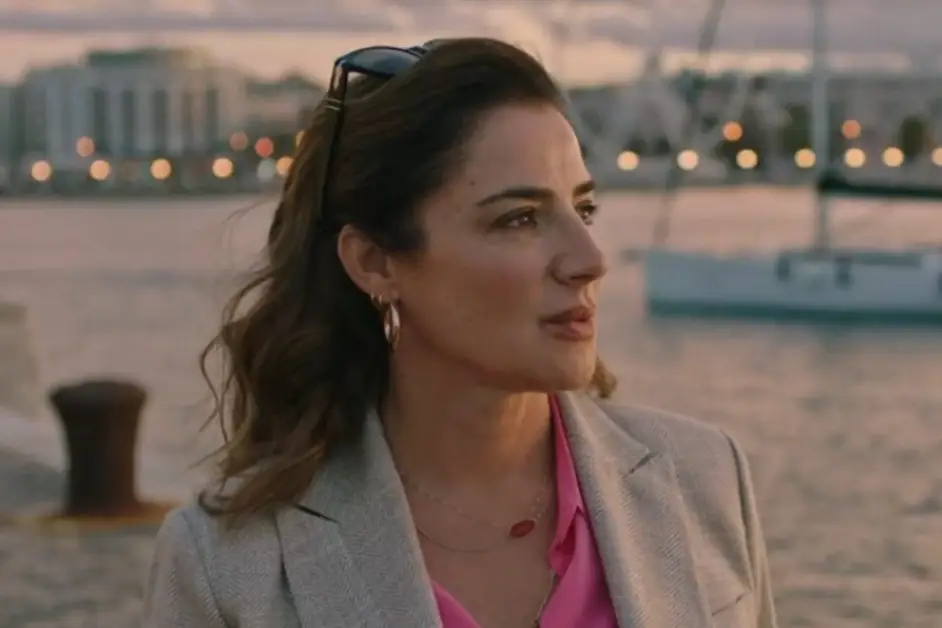The Cathedral of San Sabino
The Cathedral of San Sabino is a masterpiece of Apulian Romanesque architecture, located in the heart of Bari Vecchia, with a rich history and an atmosphere of great spirituality.

In the heart of Bari Vecchia, the Cathedral of San Sabino stands as a monument of extraordinary beauty and historical significance. Built between the 12th and 13th centuries, the cathedral is dedicated to San Sabino, the bishop of Canosa, whose relics are housed in the crypt. Its construction took place on the remains of a Byzantine church destroyed in 1156, an event that profoundly marked the city's history. Bishop Rainaldo, eager to create a building that could compete with the Basilica of San Nicola, initiated the realization of this architectural jewel.
The façade of the cathedral is characterized by a simple yet imposing design, featuring three portals that correspond to the internal naves. The central portal is adorned with decorations that reveal Eastern influences, a clear sign of Bari's historical ties with Byzantium. The central rose window is a true masterpiece, composed of 18 columns that form a circular pattern of rare elegance. Next to the cathedral, the bell tower rises to 40 meters, becoming one of the highest points in Bari's historic center.
Upon entering the cathedral, visitors are greeted by an atmosphere of peace and contemplation. The interior is divided into three naves, supported by columns with finely decorated capitals. The central nave hosts a magnificent mosaic floor, created between 1165 and 1178, offering a stunning visual spectacle. The presbytery is enriched by a bishop's chair made of stone from the 12th century, symbolizing ecclesiastical authority. The crypt, in addition to housing the relics of San Sabino, contains an ancient Byzantine icon of the Madonna Odegitria, the patroness of Bari alongside San Nicola.
Another treasure of the cathedral is the museum, which preserves sacred vestments, liturgical objects, and valuable historical documents. Visiting the Cathedral of San Sabino means immersing oneself in an authentic experience of Apulian Romanesque art, characterized by simple yet harmonious lines. This place represents a perfect example of the fusion of Western and Eastern influences that marked Bari's culture in the Middle Ages.
Unlike the Basilica of San Nicola, the Cathedral of San Sabino is less crowded with tourists, allowing for a more tranquil and meditative visit. The mosaic floor is one of the most significant examples of art in Puglia, comparable only to those in Otranto and Monte Sant'Angelo. The cathedral's central location allows visitors to combine it with a stroll through the alleys of Bari Vecchia, further enriching the experience.
The cathedral, while being a monument of primary importance, receives fewer visitors than the Basilica of San Nicola, making it an ideal place for those seeking tranquility. Morning hours offer a special light that enhances the colors of the rose window and the mosaic floor. In the evening, especially in summer, the illuminated cathedral creates a suggestive atmosphere, perfect for unforgettable photographs.
During religious services, particularly on Sundays and holidays, tourist access may be limited, but visitors have the opportunity to witness rituals in a context of great spirituality. For a complete visit, it is advisable to allocate at least an hour, including the cathedral, the crypt, and the museum. It is important to respect the dress code, covering shoulders and knees, as it is a place of worship.
In the morning, between 10 and 11, light filters through the rose window, creating suggestive plays of color inside. Don’t forget to stroll through Piazza Mercantile and Piazza Ferrarese, the vibrant heart of Bari's social life. The Cathedral of San Sabino is a place where history, art, and spirituality merge, creating an experience that goes beyond mere tourism. It is a stone book that tells centuries of Apulian history through the universal language of beauty.



